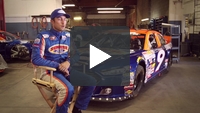Toyota Sequoia Bumper Covers
- Highest Quality Parts
- 100% Guaranteed
- 90-Day Free Returns
- Limited Lifetime Warranty
- No Restocking Fees
- Fast Shipping
-
2015 - 2022 Toyota Sequoia Front Bumper Cover
Front Bumper Cover for Toyota Sequoia 2015-2022, Primed (Ready to Paint), Suitable for SR5/TRD Sport Models with Park Assist Sensor Holes, Replacement
SEQUOIA 15-17 FRONT BUMPER COVER, Primed, Limited/Platinum/(SR5 Model with Parking Aid Sensor Holes)
OEM #: 52119-0C949, Partslink #: TO1000421 -
2015 - 2022 Toyota Sequoia Rear Bumper Cover
Rear Bumper Cover for 2015-2022 Toyota Sequoia, Primed (Ready to Paint), Suitable for Limited, Platinum, TRD Pro, SR5, TRD Sport Models, with Parking Aid Sensors Holes, Replacement
REAR BUMPER COVER, WITH PARK ASSIST SENSOR HOLES, MADE OF PP PLASTIC
OEM #: 52159-0C911, Partslink #: TO1100324 -
2008 - 2022 Toyota Sequoia Front Bumper Cover Replacement
Front Bumper Cover for 2008-2022 SEQUOIA SR5/TRD Pro/TRD Sport Models, Primed (Ready to Paint), Without Parking Aid Sensor Holes, Replacement
SEQUOIA 08-14 FRONT BUMPER COVER, Primed, without Parking Sensors, SR5 Model
OEM #: 52119-0C947, Partslink #: TO1000348 -
2008 - 2022 Toyota Sequoia Rear Bumper Cover
Rear Bumper Cover for Toyota Sequoia 2008-2022, Primed (Ready to Paint), Fits SR5 and TRD Sport Models, Without Parking Aid Sensor Holes, Replacement
REAR BUMPER COVER, FOR SR5 MODELS, WITHOUT PARK ASSIST SENSOR HOLES, PRIME/PAINT TO MATCH FINISH WITH TEXTURED TOP PAD, MADE OF PP PLASTIC
OEM #: 52159-0C910, Partslink #: TO1100269 -
2008 - 2014 Toyota Sequoia Front Bumper Cover Replacement
Front Bumper Cover for Toyota Sequoia 2008-2014, Primed (Ready to Paint), Limited/Platinum/SR5 Model with Parking Aid Sensor Holes, Replacement
SEQUOIA 08-14 FRONT BUMPER COVER, Primed, Limited/Platinum/SR5 Models
OEM #: 52119-0C948, Partslink #: TO1000347 -
2008 - 2014 Toyota Sequoia Rear Bumper Cover
Rear Bumper Cover for Toyota Sequoia Limited/Platinum/SR5 Models (2008-2014), Primed (Ready to Paint), with Parking Aid Sensor Holes, Replacement
REAR BUMPER COVER, LIMITED/PLATINUM MODEL, WITH PARK ASSIST SENSOR HOLES, PRIME/PAINT TO MATCH FINISH WITH TEXTURED TOP PAD, MADE OF PP
OEM #: 52159-0C909, Partslink #: TO1100262 -
Front Bumper Cover for Toyota Sequoia 2008-2017, 3-Piece Kit with Fog Lights, Replacement
SEQUOIA 08-17 FRONT BUMPER COVER, 3-pc kit, with Fog Lights
OEM #s: 521190C947
Partslink #s: TO1000348, Partslink #: KIT-BCFL-0860 -
2005 - 2007 Toyota Sequoia Front Bumper Cover Replacement
Front Bumper Cover for 2005-2007 Sequoia, Primed (Ready to Paint), Replacement
SEQUOIA 05-07 FRONT BUMPER COVER; Primed
OEM #: 52119-0C942, Partslink #: TO1000293 -
2001 - 2007 Toyota Sequoia Rear Bumper Cover Replacement
Rear Bumper Cover for SEQUOIA 2001-2007, Primed (Ready to Paint), with Wheel Opening Flares, Replacement
SEQUOIA 01-07 REAR BUMPER COVER, Primed, with Wheel Opening Flares
OEM #: 52159-0C902, Partslink #: TO1100200 -
2001 - 2004 Toyota Sequoia Front Bumper Cover Replacement
Front Bumper Cover for Toyota Sequoia 2001-2004, Primed (Ready to Paint) with Wheel Opening Flares, Replacement
SEQUOIA 01-04 FRONT BUMPER COVER, Primed, with Wheel Opening Flares
OEM #: 52119-0C900, Partslink #: TO1000223
Welcome to Go-Parts,
Your Go-To Place for Auto Parts!
Your Go-To Place for Auto Parts!
Are you looking for high-quality, affordable auto parts to enhance your vehicle's performance and reliability? You've come to the right place! Our auto parts are designed to meet and exceed industry standards, ensuring the best possible driving experience for you and your loved ones.
💎 Why Choose Our Auto Parts?
🏆 OEM-Quality: Our aftermarket replacement auto parts are engineered to match the quality and performance of your vehicle's original equipment, without the hefty price tag. Buy OEM-quality parts for discount prices and save BIG on your next auto parts purchase!
🛡️ Safety Assured: Your safety is our top priority. All our auto parts have passed relevant national safety standards, giving you the confidence and peace of mind you need while driving.
🚚 Fast & Secure Shipping: Don't wait around for your new auto parts! Our reliable shipping service ensures you get your parts quickly and safely, so you can enjoy your vehicle's improved performance in no time!
🔒 Go-Parts' Unbeatable Guarantees:
💰 100% Money-Back Guarantee: We stand by the quality of our products. If you're not satisfied with your purchase, we'll give you a full refund, no questions asked!
🔄 90-Day Return Policy: Changed your mind or need a different product? No problem! With our generous 90-day return policy, you can return your auto parts and get the perfect fit for your vehicle.
🏅 Limited Lifetime Warranty: We believe in our auto parts, and we know you will too. That's why we offer a limited lifetime warranty on our products, giving you the assurance you need for a long-lasting, hassle-free investment.
Don't miss out on this opportunity to upgrade your vehicle with our high-quality, affordable auto parts.
Experience the Go-Parts difference today!
Customer-friendly

- No-Hassle Returns
- Live Representatives
Trusted brands

- DOT/SAE Certified
- Limited Lifetime Warranty
Fast Shipping

- Most Orders Shipped Priority Mail
- Distribution Centers in NJ, GA, NV
Secure Shopping

- 2048-Bit SSL Encrypted
Proud Partner of
Ryan Partridge & Sunrise Ford Racing
Proud Partner of
Rick Ware Racing
Proud Partner of
Roberts Racing
ResellerRatings





















